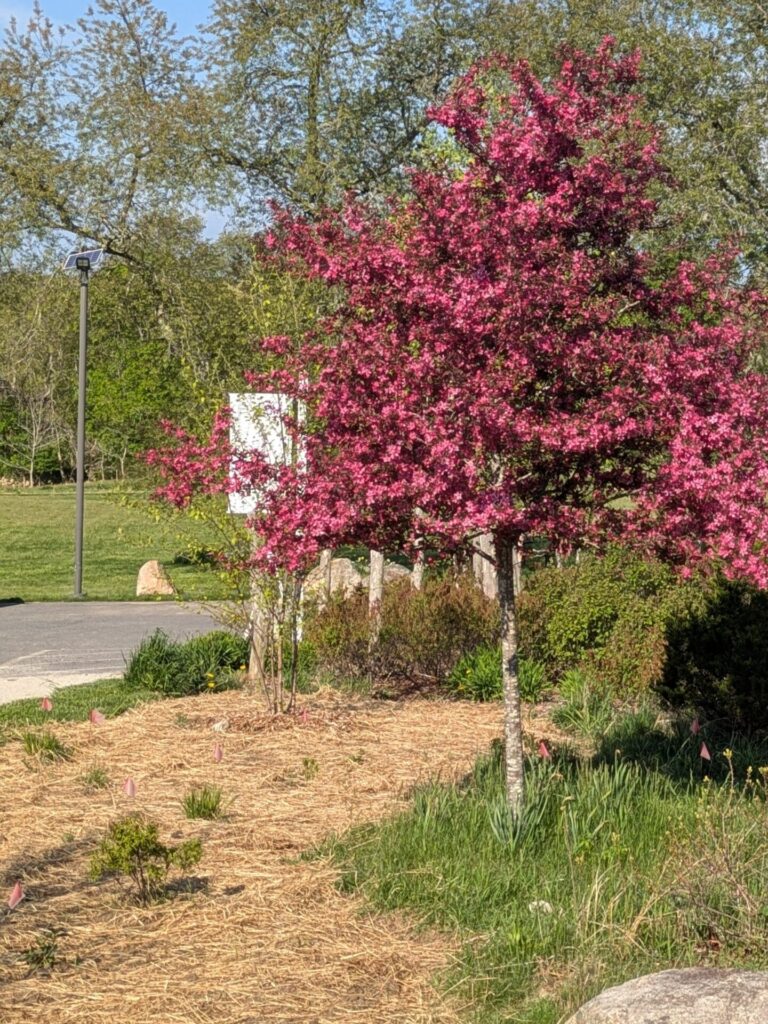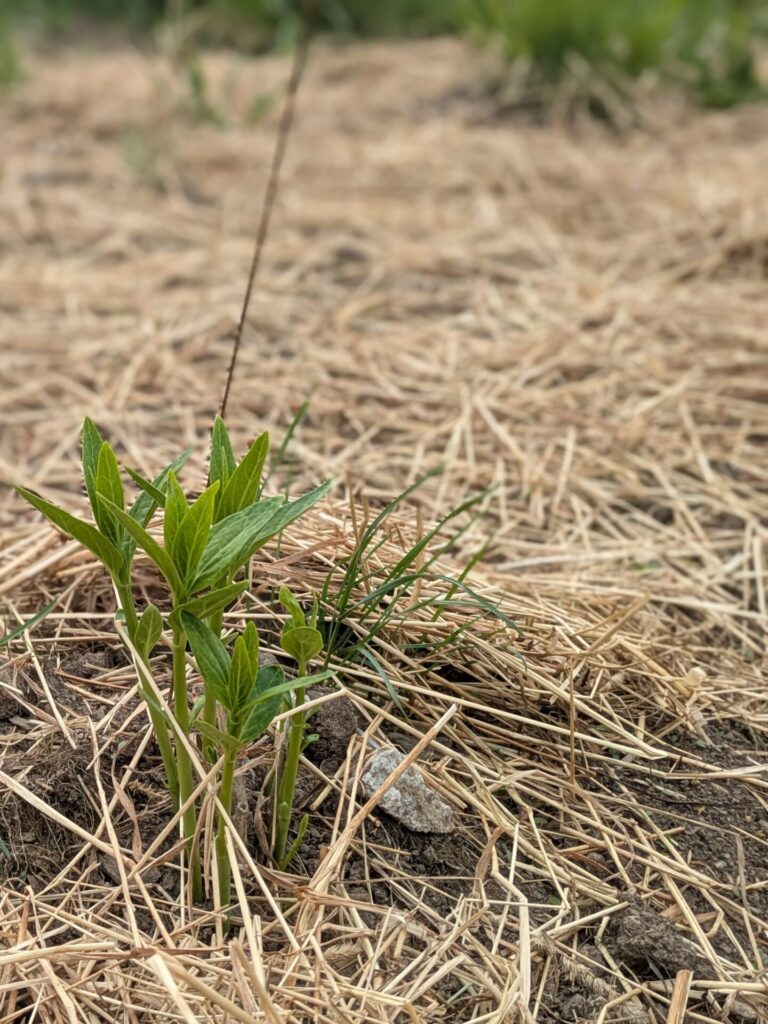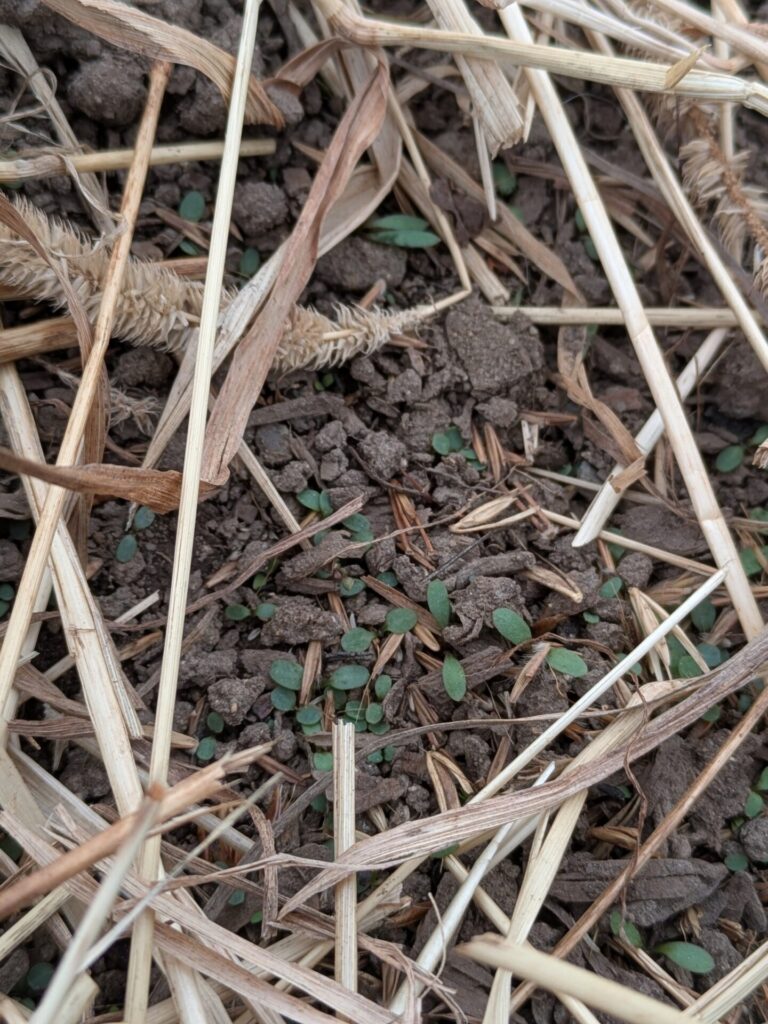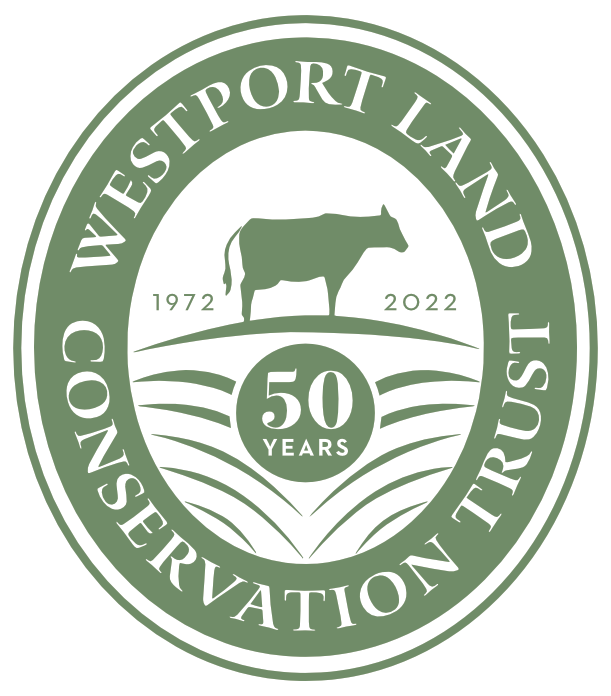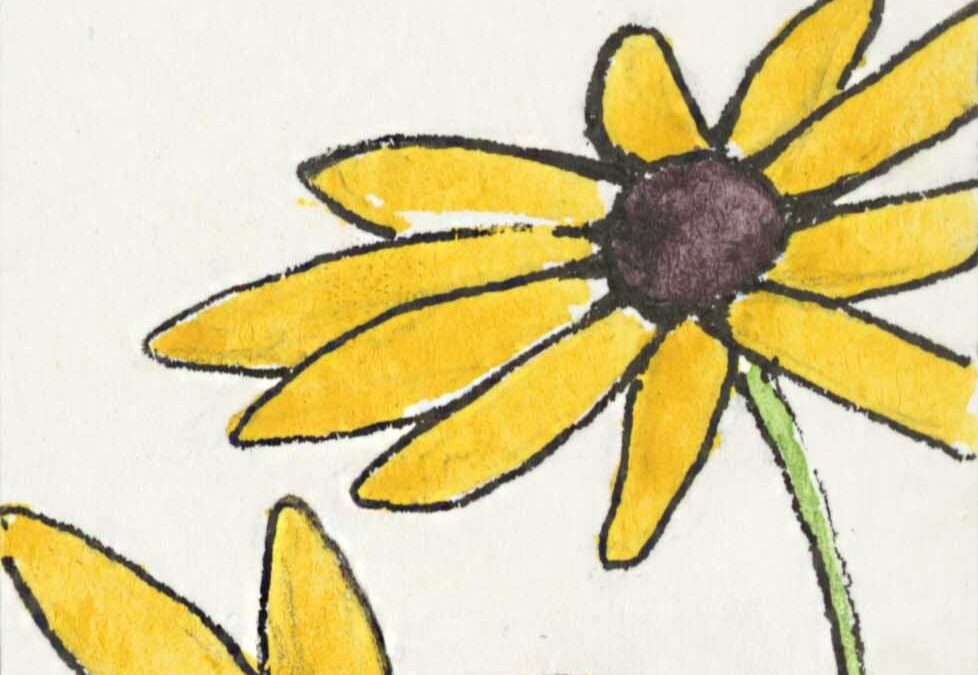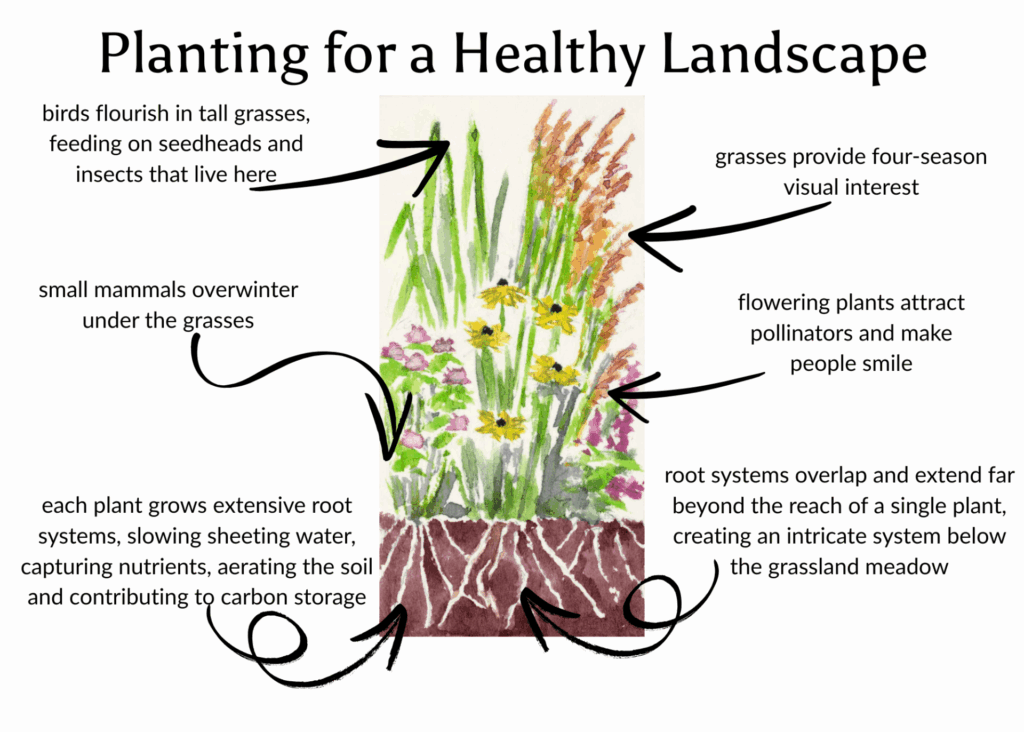
Planting inspiration
Spring is in full swing and lots of us are in our gardens, yards and on the land thinking about next steps to improve our landscapes. Throughout the year, WLCT receives questions in regards to our seeded grasslands, small meadows and gardens at Westport Woods. So, as an inspiration, our membership mailing included a small seed packet of a typical mix that is easy to use in home landscapes.
The seed mix, depicted in the watercolor image, is from Ernst Seeds and includes grasses (both cool season and warm season) and some hardy wildflowers.
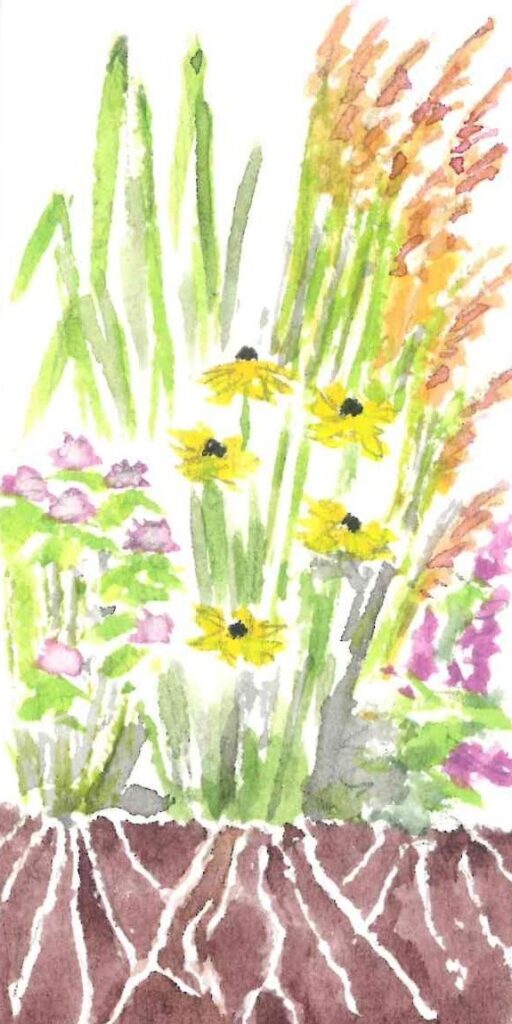
Broad Applications
We chose this mix for its applicability in multiple settings. Designed to look good and develop habitat, Ernst calls this “Upland Wildlife Forage and Cover Meadow” which describes it pretty well! It will be a great buffer to wet areas or forested areas and provide significant forage and habitat for all wildlife.
Starting from Seed
When starting any seed mix, there are several key factors to keep in mind:
- Start from Scratch Do prep your site. Don’t allow existing grasses or plants to compete.
- Prepare a Light and Fluffy Bed The best way to ensure this is to turn the soil over and amend it with some natural compost. Light and fluffy soil allows for greater seed contact to the soil and water absorption!
- Water, water, WATER! If you are able to execute the seeding with several days of rain in a 7-10 day window, that is perfect. However, if you cannot rely on the rain, just make sure the seeding gets a hardy watering 3x in the first 10 days.
- Sun and Warmth When a seed has sufficient soil contact, plenty of water and sunlight, it will germinate. Sometimes, in Spring it is best to also lay a cover of straw or hay to retain moisture and keep the suns heat in the soil. Be sure to allow for sunlight to reach the ground–just a light covering is best.
If you follow these keys, you are sure to have success!
What’s Growing?
We planted our test bed the last week of April.
The first seed to germinate was the Virginia wildrye (Elymus virginicus), a thin, purplish spear. This was followed, about 21 days after seeding, by Asclepias syriaca, common milkweed. Like most local gardens, ours is visited by hungry deer and rabbits, and the Asclepias was quickly munched away. In hindsight, we should have sprayed those seedlings with deer/rabbit deterrent the moment they spread their leaves!
At week 6, our test bed is showing the first true leaves of Rudbeckia (Black-eyed Susan), Heliopsis, and Coreopsis.
If you’d like to see an example of this native mix from its beginnings, we have started a test bed outside the office at Westport Woods.
